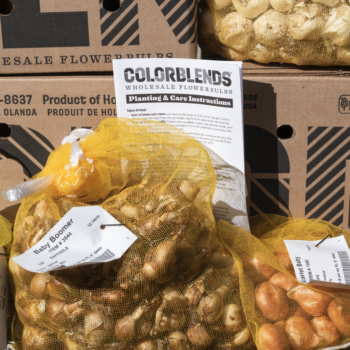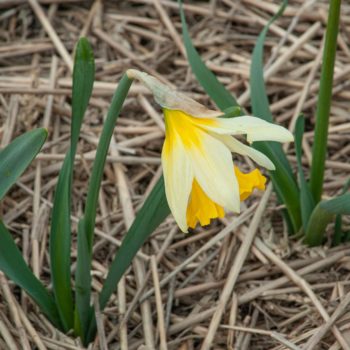Bulbs need ample moisture from fall, when they make new roots, until they finish flowering in spring. If the soil is dry at planting time, water thoroughly after planting. Thereafter water only if rainfall is scarce. Stop watering after the bulbs bloom. Supplemental watering after bloom—especially in the Deep South—may cause bulbs to rot.
The bulbs we ship already have next year’s flowers set inside them, so there’s no need to fertilize at planting time. To grow and flower well in future springs, bulbs need access to nutrients in the soil. Most soils contain these nutrients in sufficient abundance. If you find that your bulbs (or other garden plants) are not growing well, we suggest that you have your soil tested to identify any nutrient deficiencies and that you correct those deficiencies with an organic fertilizer, which will release nutrients slowly. You can generally do without fertilizer entirely if you mulch your bulbs with 2–3 inches of an organic material such as compost, shredded bark, aged wood chips, pine straw, or shredded leaves, and freshen it as needed.
Note: If you use mulch, you can reduce the planting depth for your bulbs. The denser the mulch, the greater the reduction, but as a rule of thumb, 2 inches of mulch is equivalent to 1 inch of soil.


